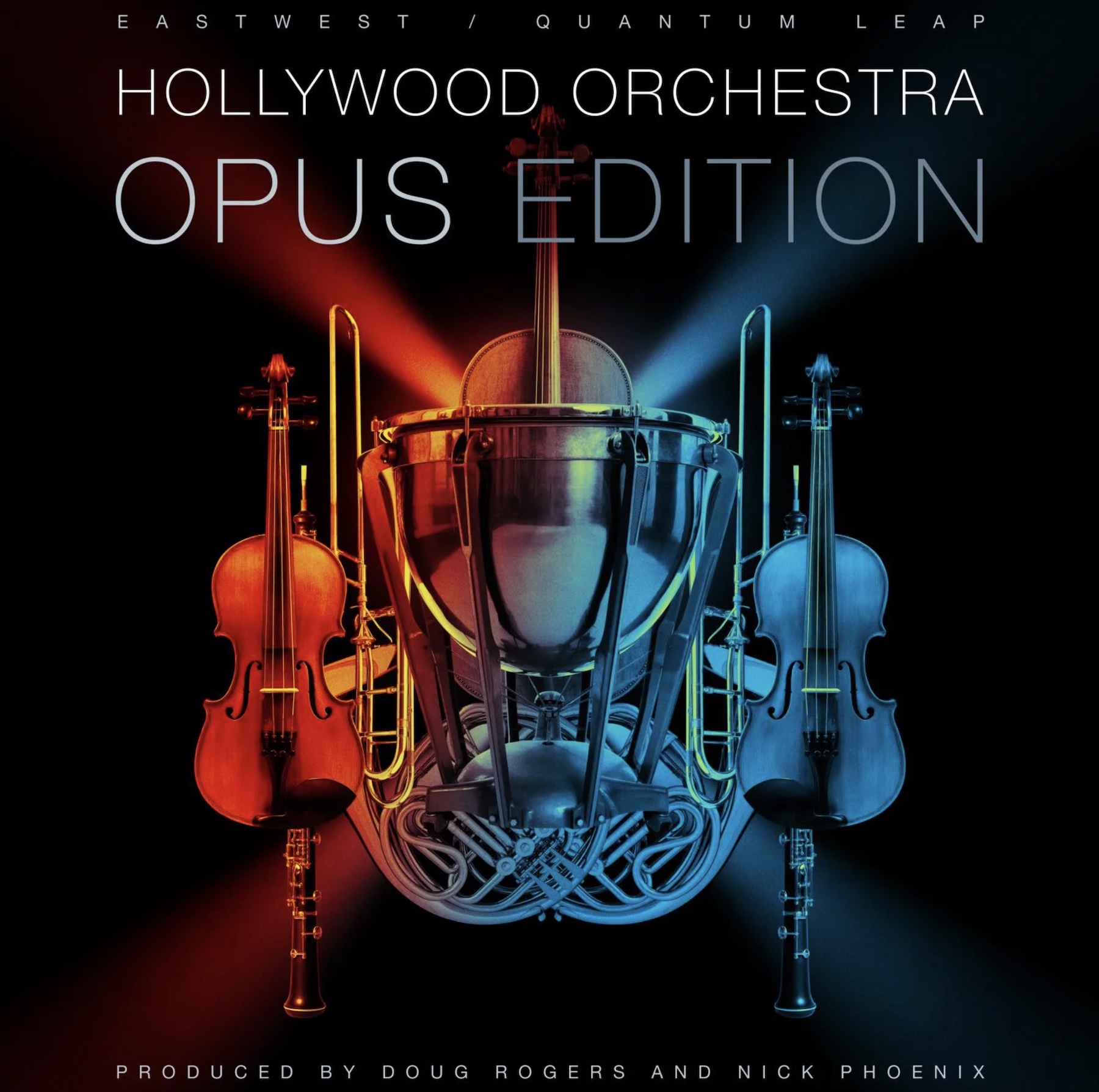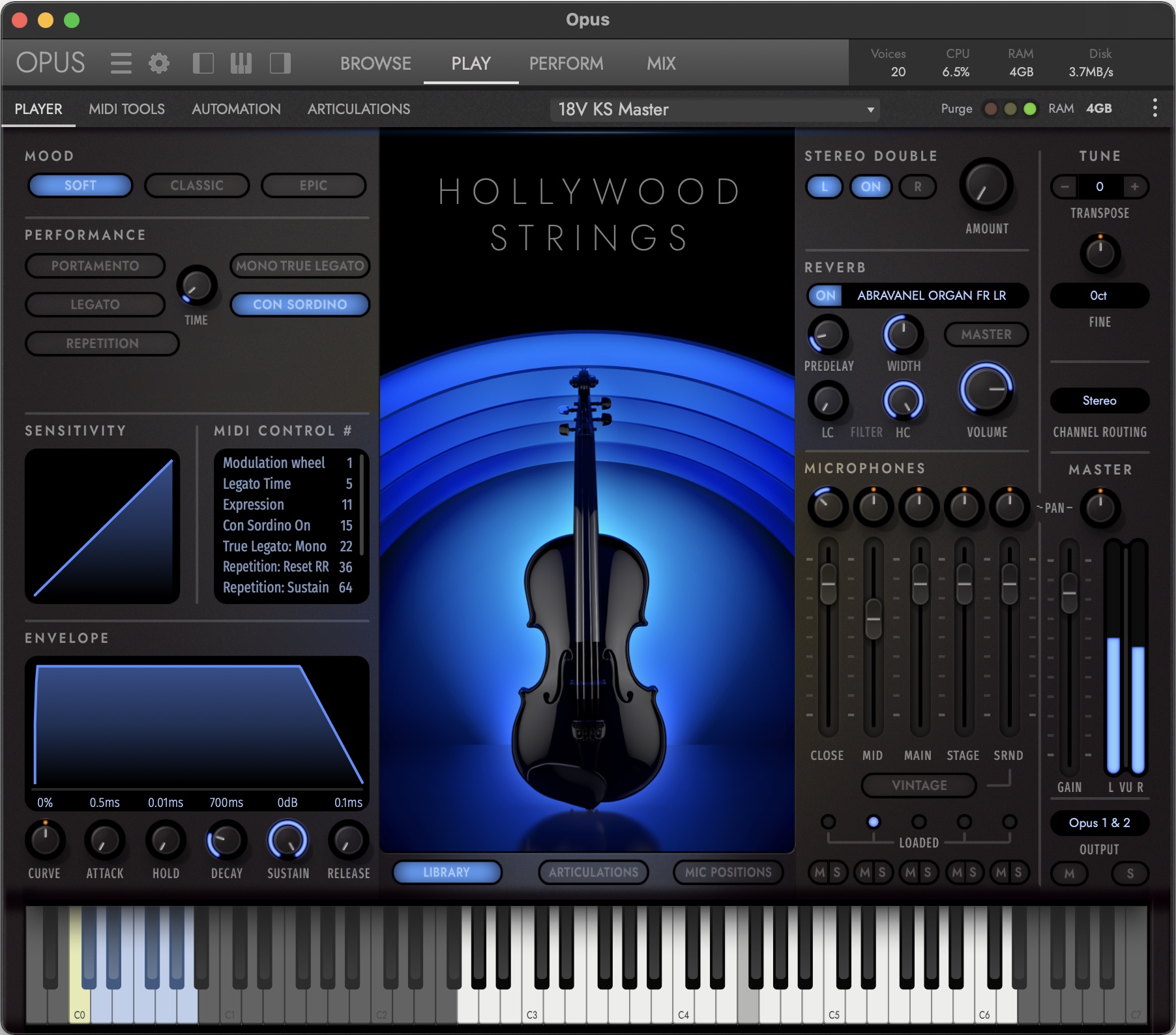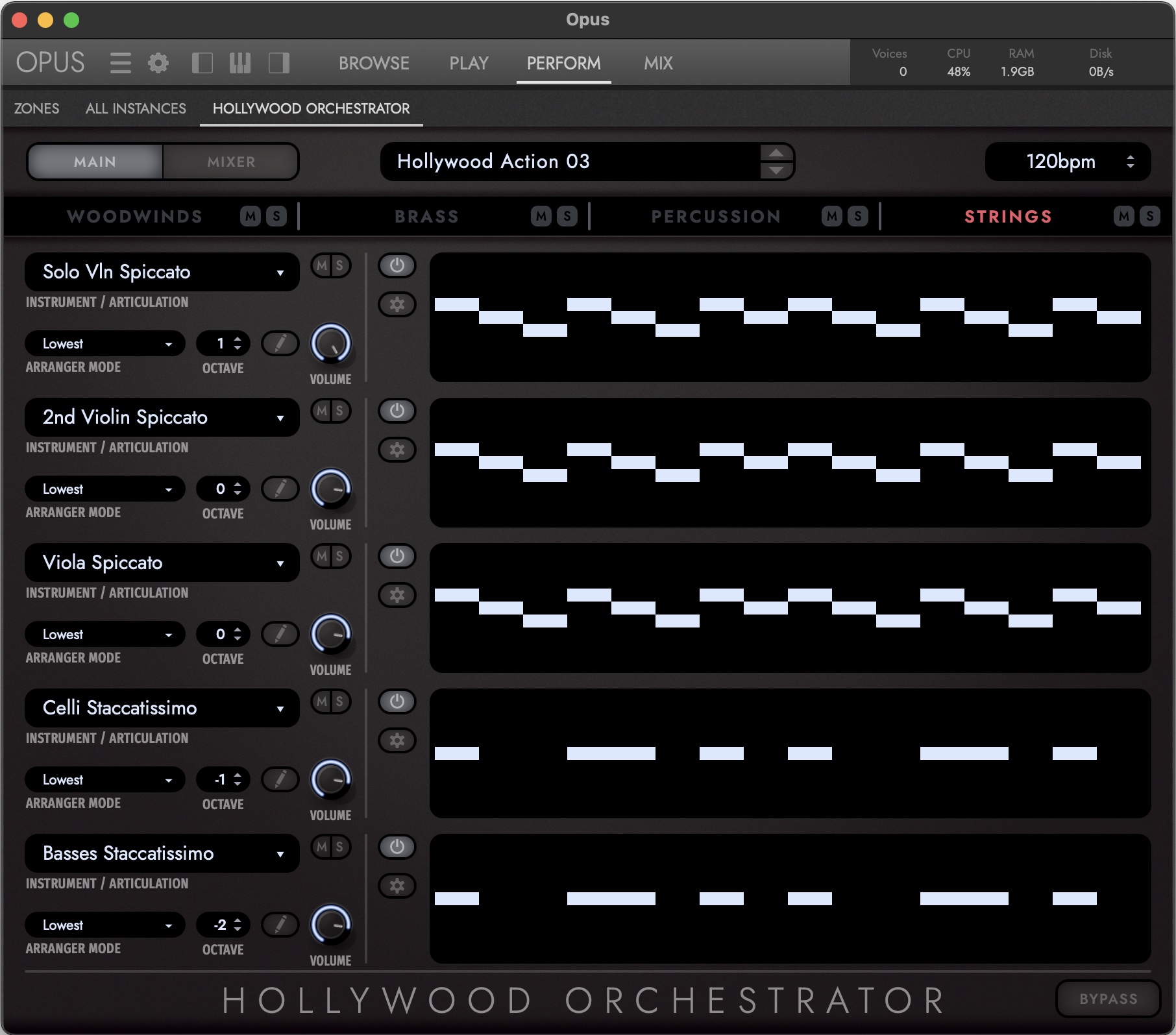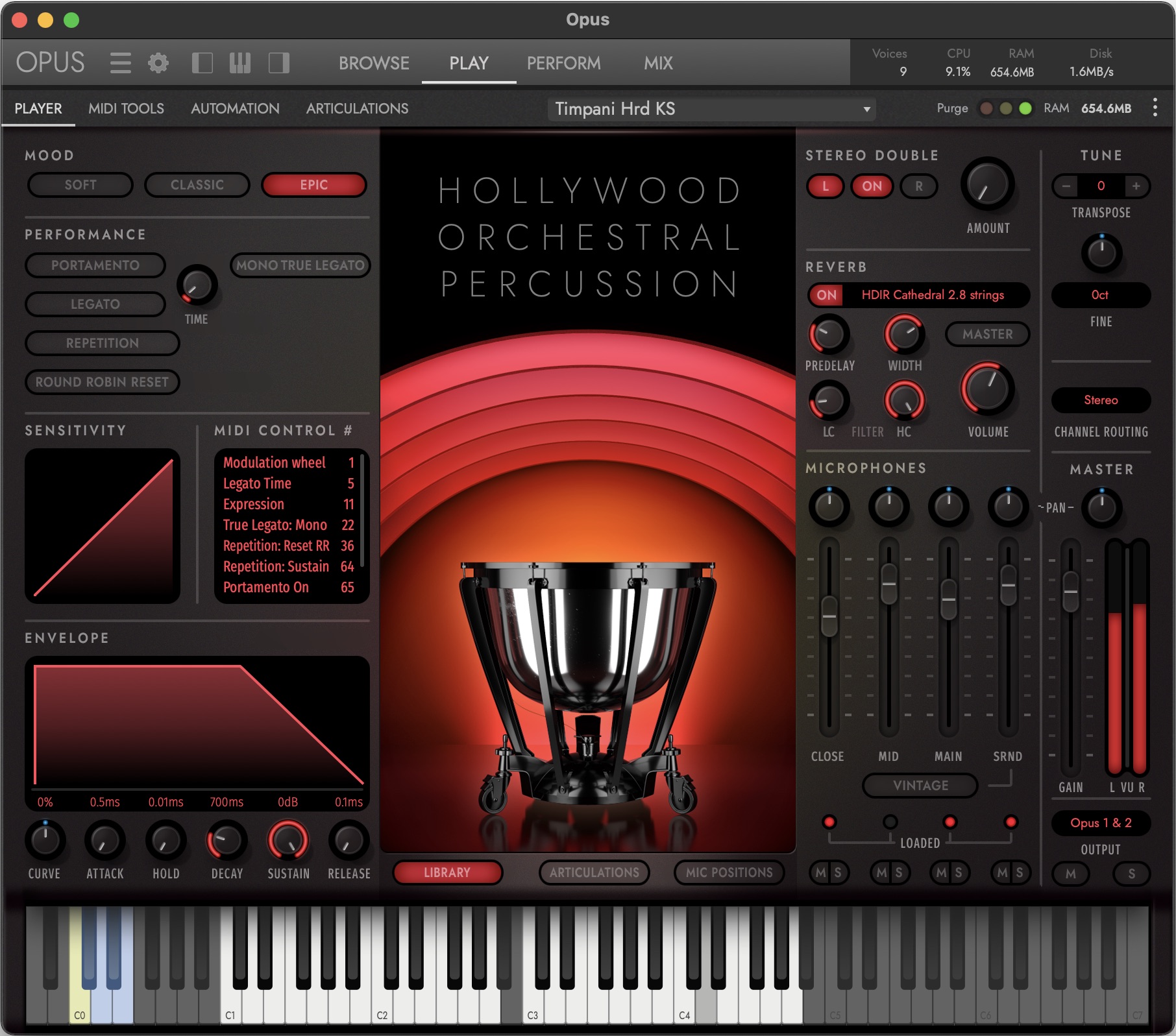Software Review: Eastwest Hollywood Orchestra Opus Edition
EastWest has built a name for itself as one of the most in-demand sample library developers in the world.
Their libraries consist of everything from orchestral strings, brass, woodwinds, and percussion to East Asian solo instruments or even sounds inspired by The Beatles.
Initially releasing third-party libraries for Native Instruments’ Kontakt, EW garnered a lot of attention when eventually debuting Play, their standalone software/plugin.
Now, they’ve hit the mark again with the introduction of the Hollywood Orchestra Opus Edition. Produced by Doug Rogers and Nick Phoenix, Opus offers a lot of compelling features, including some new sample content, a redesigned scalable GUI, and an impressive orchestrator.
EastWest Hollywood Orchestra Opus Edition’s Features
Hollywood Orchestra was recorded in EastWest Studio 1, as were the new Opus recordings. Mixed by Shawn Murphy, the samples in this collection have a magical Hollywood sound to them that can be tweaked even further by the mood settings, which we’ll talk about in more depth later.
One of the newest features is the 18-piece violin section that incorporates a bow change legato and traditional connected vibrato technique. The two new trombones bring a lot of power, and with multiple lengths of notes to choose, it’s easy to add more life to your mock-ups. The two trumpets in Opus perform incredibly in sync and their intonation and tone really come together for a beautiful and bold brass sound. As for the woodwind ensemble, there’s a fabulous selection of three bassoons, three clarinets and three flutes.
There’s now a mood selector in the Play tab allowing you to choose between Soft, Classic, and Epic. Classic is a default mix while Soft focuses on softer dynamics. Epic, on the other hand, is ideal for everything from scoring adventure scenes to bombastic fight sequences. For those interested in what the mood selections actually do behind-the-scenes, they act as mix snapshots that switch the mic balances and reverb settings but can also emphasize different dynamic layers. You can create your own custom mood snapshots and easily recall them in the future as well.
Hollywood Orchestrator comes as a collaboration with Sonuscore and aims to help composers and producers create full orchestral arrangements in no time. Playing MIDI in real-time, the orchestrator companion takes the MIDI played in by the composer and analyzes the chords, arranging it for the selected ensemble section.
Every one of the older products was redesigned for the new Opus engine. The brand new database in Opus makes it easier than ever to locate sounds by categories or the search engine. The database also allows you to see what instruments you own and offers users the ability to download any instrument/articulation directly from the cloud. Admittedly, I was a little hesitant to download the full terabyte of Opus content as I’m starting to run out of hard drive space, but this new feature for downloading each instrument as needed is one that I hope more sample library developers offer soon.
In Use
Starting off with the reimagined GUI, I love the look of Opus. As a longtime Play user, the fully resizable interface is certainly a welcome addition. Samples seem to load faster in Opus, and overall, the interface appears more intuitive than the one offered in the Play engine.
The Hollywood Orchestrator has a preset browser with tabs for ensembles, ostinatos, and scores. Selecting “Hollywood Adventure” under the scores tab, allows me to play a simple 3-note chord and hear a Hollywood-style passage completely arranged. Switching to an ostinato preset gave me access to a fat ostinato section that sounded well-balanced and immediately ready for use. While these Hollywood Orchestrator presets sound great, they lack a few editing features and the ability for MIDI export, which isn’t ideal for composers who might receive notes or revision requests. With that said, it’s a fun way of sparking inspiration and can be helpful for adding an orchestra to pop productions.
Moving on, the Penderecki articulation in the new 18-piece violin section has such a nice movement to it, and it truly shows off the amazing sound of the studio where it was recorded. Throwing on the “Ensemble Sul Tasto” patch was a shortcut for beautiful, yearning pad-like textures. Turning on a little bit of stereo doubling from the player window created a lovely sense of dimension too. In general, the EastWest string sound is a lot more direct and dry than other commercial libraries I’ve used. There’s an option in Opus’ settings to “load with effects off”, which adds to the dryness if the default reverb is disengaged. I tend to quite like that sound.
The new trombone patch has an upfront and menacing sound within the epic mood, somewhat reminiscent of Mahler. With the Soft setting engaged, you can play really lovely choral brass parts. The low brass is already quite menacing thanks to a load of FX articulations like “Chaos”, “Cluster Dance”, “Creepy Sustains”, and “Elephants”. Switching to the epic mood brings out even more of a foreboding quality in the sound. I found that most of the brass sounds, especially the trumpets and french horns, benefited from blending in the Opus reverb to connect the sound of legato and short note passages. There are so many wonderful options for reverb and switching between my favorite presets of “Burbank Scoring Stage Medium LR”, “Culver Scoring Stage”, and “EW Chamber 3” almost reinvented the samples. The multitude of presets kept everything sounding fresh, as though it was a completely new sample library each time.
The percussion is nice and fat. The stage it was recorded on has a satisfyingly natural sound to it. The dryness of the samples allow you to hear the detail in the instruments. Combined with the jazzy trombone articulations, the Classic mood vibraphone and xylophone sit really well and can pull off fast jazz arrangements. Switching the pitched percussion to the epic mood brings out more aggression in the sound and helps them stay present even through thick Avengers-style action orchestration. The snares, bass drum, and other orchestral percussion elements also benefited from Opus’ reverb. I love the “Burbank Scoring Stage” presets paired with the epic mood because it crafts a huge ensemble sound.
Having never used the EW harp before, I was blown away by its natural sound and ease of programming. It sounded great through all 3 mood settings, so I wanted to abuse the portamento feature. To my complete shock, it sounded hilarious but still very much usable for a comedic effect in a score or song. With that said, the harp itself is lovely, so I’ve recently added it to my orchestral template.
To Be Critical
There’s obviously a tremendous amount to explore in this new offering from EastWest, but does it compete with the competition? In short, yes. However, I feel like there are attributes that EW could still improve upon. I had some installation issues and there are reportedly others facing similar problems. I think Opus is easier to install if you’ve previously owned the Hollywood Orchestra bundles and simply upgrading, so it’s possible that you won’t run into any issues at all.
The Hollywood Orchestrator feature is definitely impressive and I can’t wait to see how it evolves and grows over time. I do wish though that you could export the orchestrated MIDI files easily for modification within your personal DAW. Having said that, you can record MIDI out of the Hollywood Orchestrator into a MIDI track in DAWs like Cubase, but it’s not supported in every DAW. Either way, it’s a bit of a time-consuming workaround for a feature meant to save the user time.
While I love the available articulations for all of the orchestral instrument groups, I do feel like EastWest could have improved the engine to make it easier to program. Additionally, the upgrade price of $595 from the Diamond Play version to the Opus Diamond version is asking a lot from loyal users. I suppose it’ll encourage more people to join the subscription service instead.
Summing it Up
The new Opus collection offers a lot of features for hobbyists, students, professional composers, and orchestral mock-up enthusiasts. The new instruments, the Hollywood Orchestrator, mood settings, and enhanced database are all welcome improvements for working quickly and efficiently. The interface is more intuitive, rescalable, and the samples load faster than ever before. Overall, it’s a big upgrade from the previous Play engine. For $19 a month, it’s absolutely worth trying out their ComposerCloud+ subscription bundle, which includes Opus and 70 full collections. See if it proves as worthwhile within your setup as it did in mine!
Matthew Wang is an LA-based guitarist, producer, songwriter, film composer, and SonicScoop contributor.
Please note: When you buy products through links on this page, we may earn an affiliate commission.










